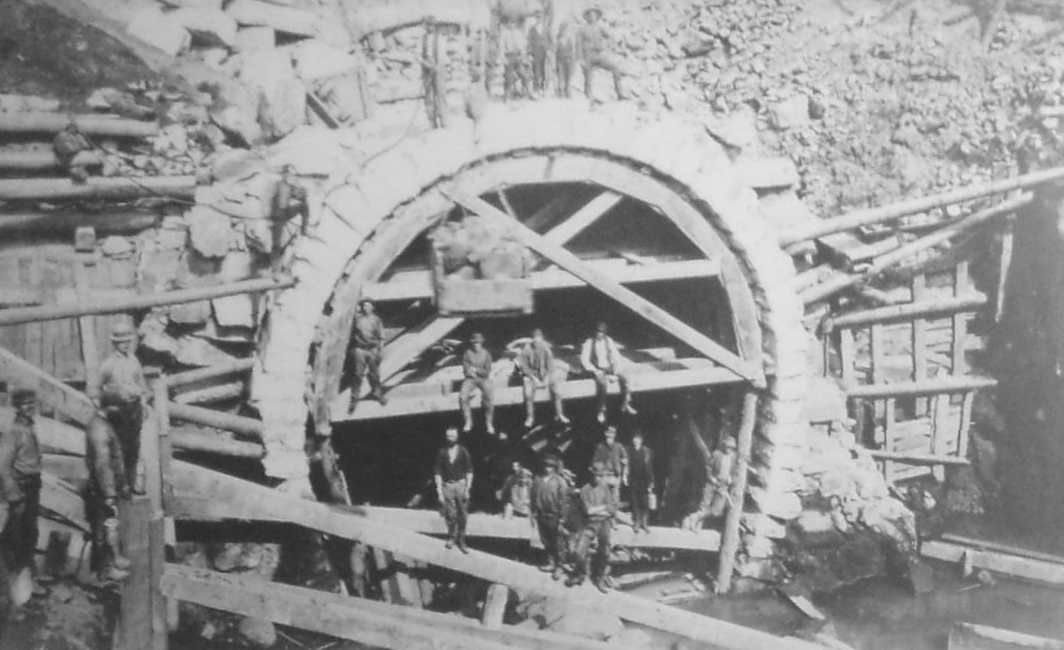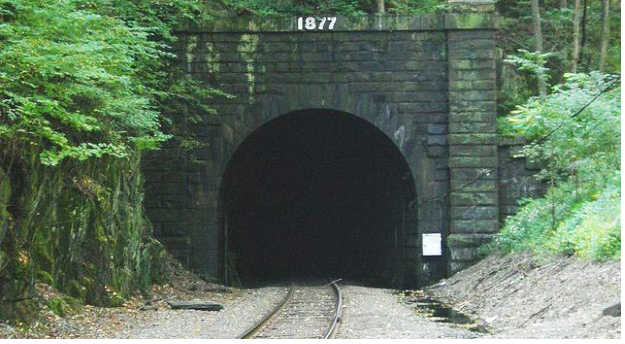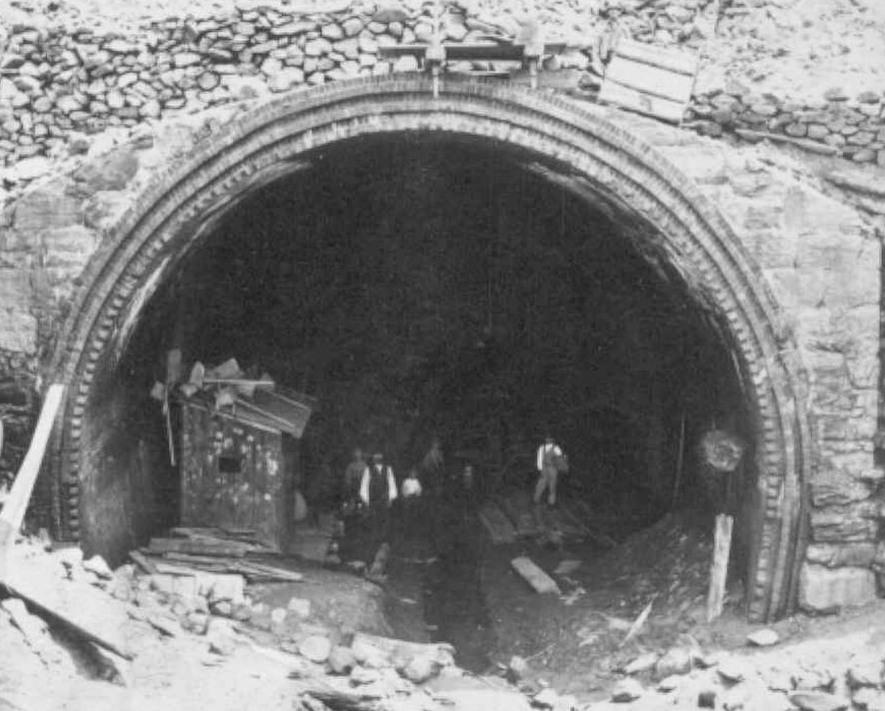This is the twentieth in a series of entries celebrating infrastructure achievements in the United States.

What: The Hoosac Tunnel was the longest tunnel in North America when it was built and remains the longest active transportation tunnel east of the Rocky Mountains.
When: On February 9, 1875 the first train passed through the tunnel.
Why: It was conceived as part of a transportation link between the markets of Boston and the Midwest along the newly chartered Troy and Greenfield Railroad line.
Stats:
– Length: 25,081 feet (4.75 miles)
– Height: 20 ft.
Interesting facts: Two million tons of rock were carved out of the Berkshire Mountain range to build the Hoosac Tunnel.
Although the tunnel is considered an engineering achievement, it’s completion came about in large part due to the sacrifice of its workers. Almost 200 lives were lost during the tunnel’s construction.
The Hoosac tunnelers developed several innovations that marked the transition to modern tunneling methods: 1) a more effective process for pushing the tunnel advance, called the “center-cut system;” 2) the use of mechanized drilling equipment; 3) the use of high-powered explosives that resulted from advances in the science of chemistry; and 4) the use of electricity to detonate blasting caps, which in turn set off the explosive charge.
The tunnel required more than 20 years of labor. The project took so long to complete that it was referred to as “The Great Bore.”
Check out this series for more info on the Hoosac train tunnel:
Tags: Great American Infrastructure, Hoosac Tunnel, Massachusetts, North Adams








 RSS Feed
RSS Feed